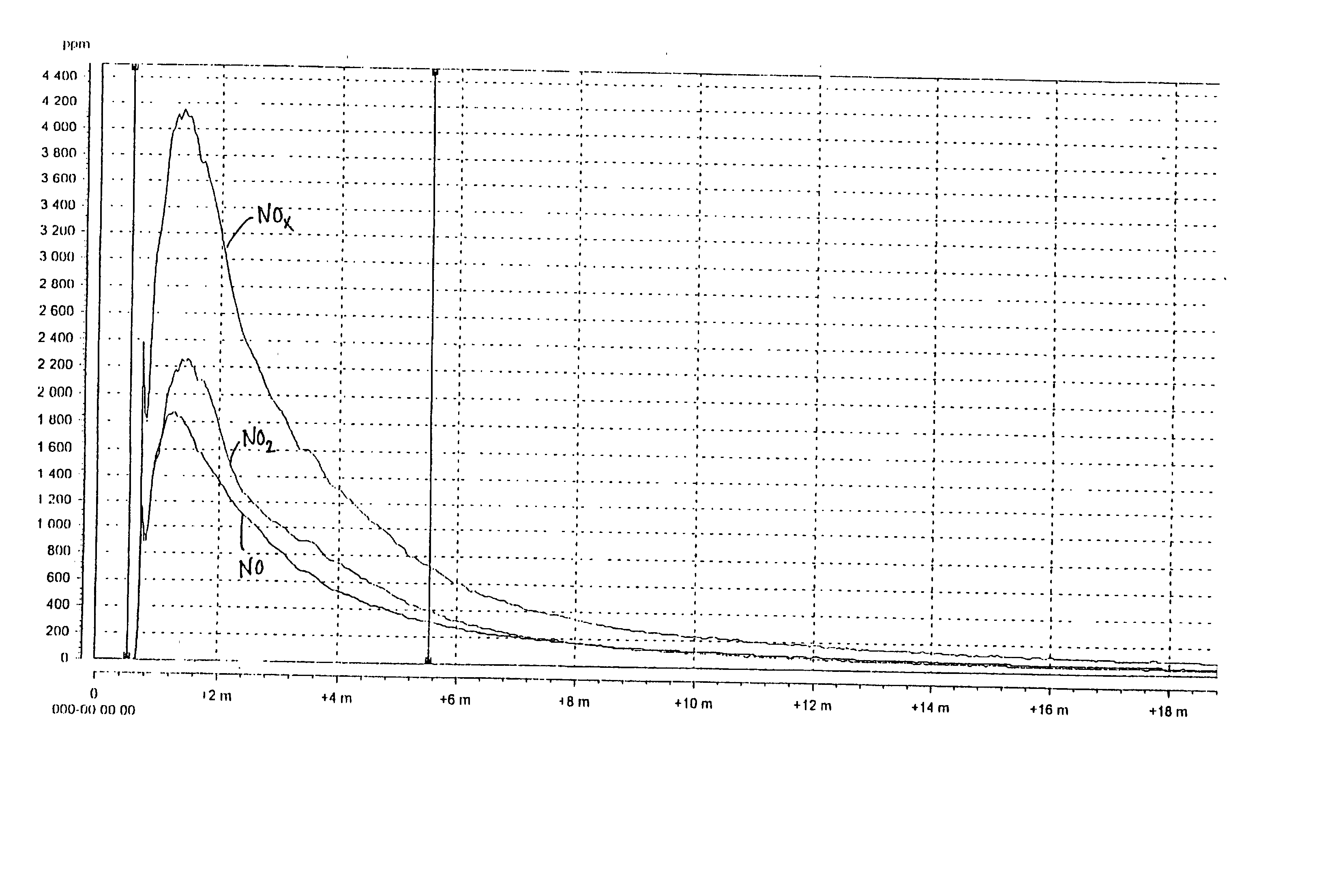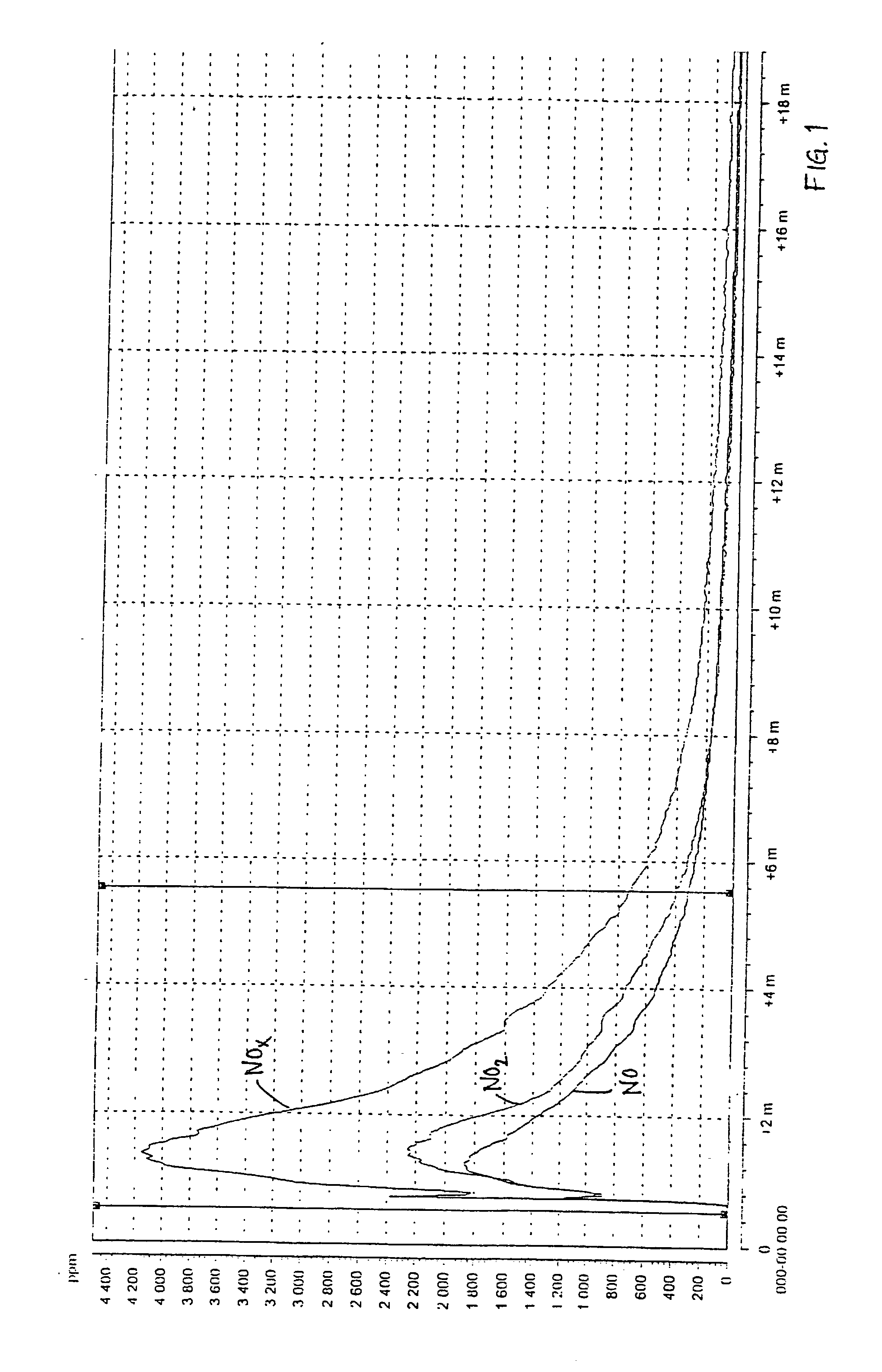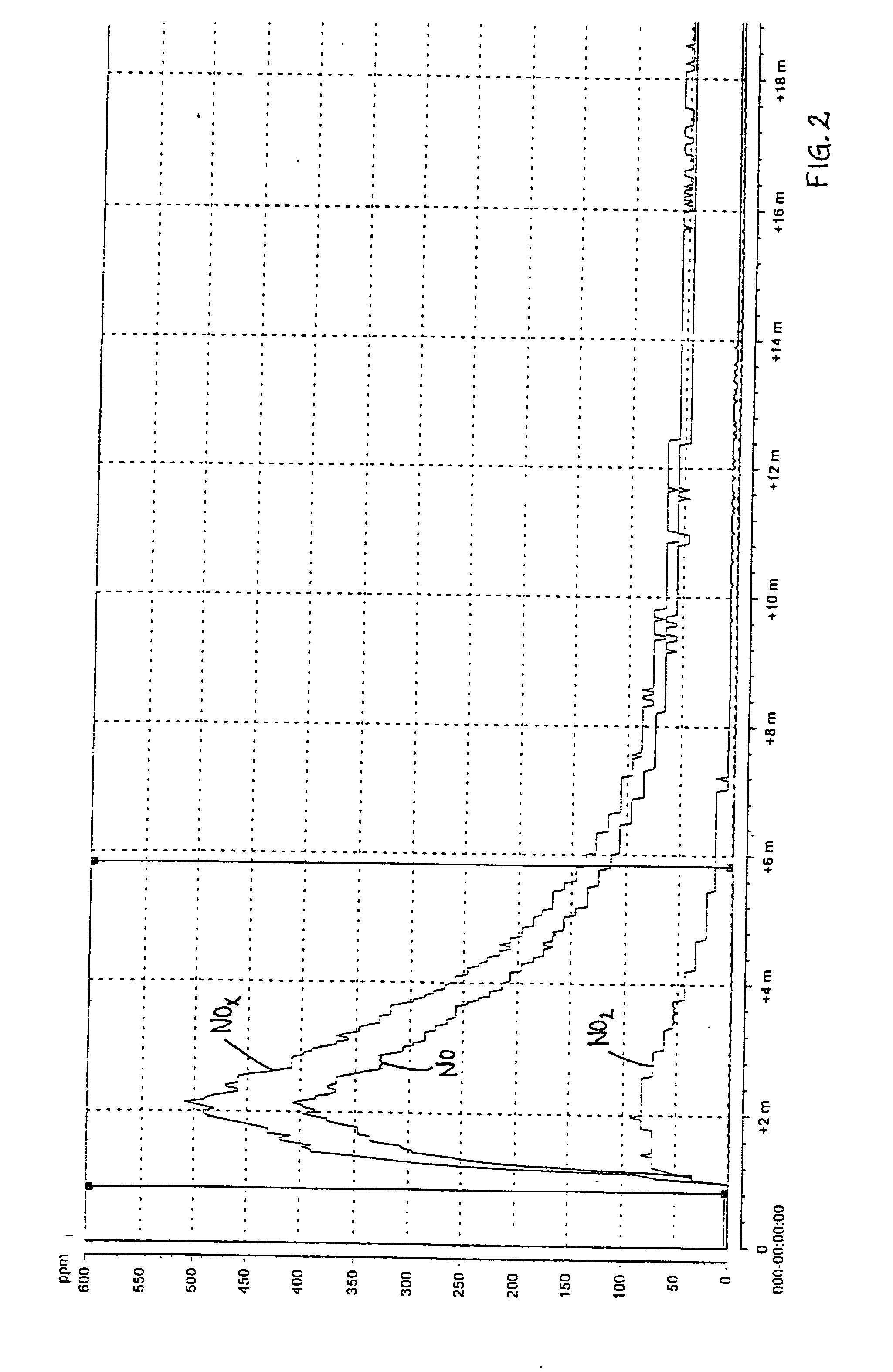Picking agent containing urea and method of producing it
a technology of urea and pickling agent, which is applied in the direction of detergent compounding agent, detergent composition, coating, etc., can solve the problems of difficult to solve environmental problems, poor pickling effect, nitrate-lacking pickling agent, etc., and achieves long-term stability and easy handling
- Summary
- Abstract
- Description
- Claims
- Application Information
AI Technical Summary
Benefits of technology
Problems solved by technology
Method used
Image
Examples
example 1
[0037] A series of tests was performed in a laboratory with the aim to study the NO.sub.x-reducing effect of urea in pickling agents and to study the long-time stability of pickling agents containing urea.
[0038] A saturated solution of urea in water (500 g / l) was manufactured and added to the existing pickling gel of the type 122 from the company Avesta Welding by adding given amounts of an urea solution to 100 ml of a pickling gel followed by a thorough stirring. The different concentrations which were tested as to pickling ability and NO.sub.x-reduction were then 20, 40, 80, and 160 g / l. The samples were stored in 250 ml plastic bottles with covers at a comparatively high room temperature (for the most part almost 30.degree. C.) and partly directly in sunlight. The storage time varied from 24 hours to about two months in order to study the stability of the pickling gel in the presence of urea.
[0039] The pickling gel 122 from the company Avesta Welding, which was used in the tests,...
example 2
[0048] A test in a large scale with 80 g / l urea in the pickling liquid for spray pickling was performed. The liquid was caused to mature during 24 hours after the addition of urea, before the test was performed. The pickling was performed on a large scale in a testing chamber of about 100 1 and a sheet of about 0,5 m.sup.2 of a 18-8 steel. The pickling solution was applied through spray pickling with an acid resistant diaphragm pump. The pickling gel of the type 122 from Avesta Welding, which was used in the tests, comprises 22 percent by weight of nitric acid, 5 percent by weight of hydrofluoric acid, 4 percent by weight of MgO, balance water.
[0049] The results of the measurement with the chemical luminescent instrument are shown in FIG. 3 (reference, without urea) and FIG. 4 (tests according to the invention). The maximum NO.sub.x-emisson during the reference test was 2991 ppm and during the test according to the invention 321 ppm, which implies a reduction by 90%.
[0050] The visua...
example 3
[0051] A large scale test with 150 g / l urea in the pickling liquid for spray pickling was performed in the same way as in Example 2. Then, differences in the pickling results was evaluated depending on the fact whether urea had been added to the pickling liquid in the form of an aqueous solution or directly in a solid condition. Visual judgement proved that the most even distribution of the liquid was obtained when the urea had been added in a solid condition directly into the pickling liquid, which also resulted in the most even pickling result. Even when urea had been added as an aqueous solution, a satisfactory pickling was however obtained.
PUM
| Property | Measurement | Unit |
|---|---|---|
| temperature | aaaaa | aaaaa |
| temperature | aaaaa | aaaaa |
| time | aaaaa | aaaaa |
Abstract
Description
Claims
Application Information
 Login to View More
Login to View More - R&D
- Intellectual Property
- Life Sciences
- Materials
- Tech Scout
- Unparalleled Data Quality
- Higher Quality Content
- 60% Fewer Hallucinations
Browse by: Latest US Patents, China's latest patents, Technical Efficacy Thesaurus, Application Domain, Technology Topic, Popular Technical Reports.
© 2025 PatSnap. All rights reserved.Legal|Privacy policy|Modern Slavery Act Transparency Statement|Sitemap|About US| Contact US: help@patsnap.com



